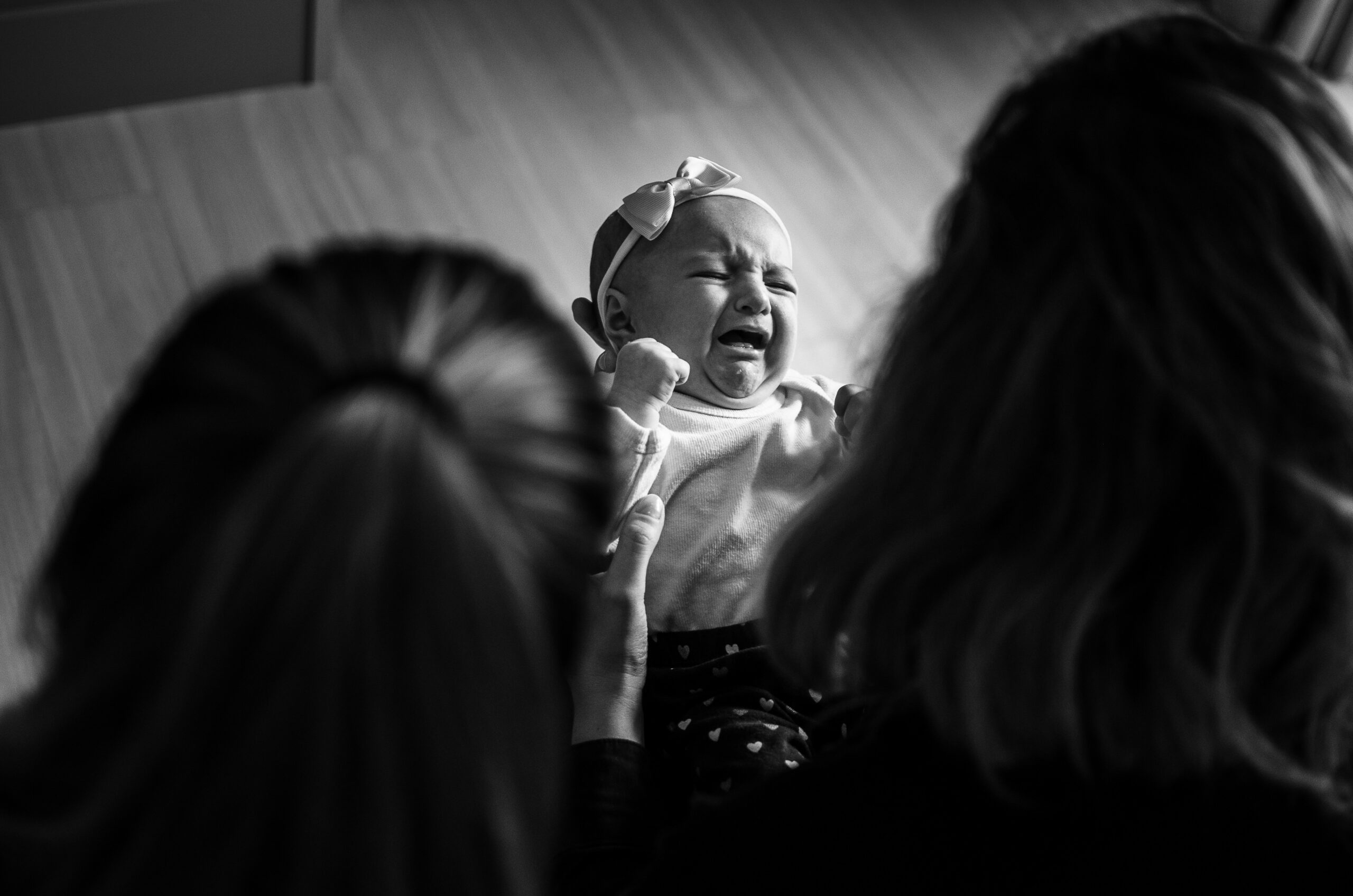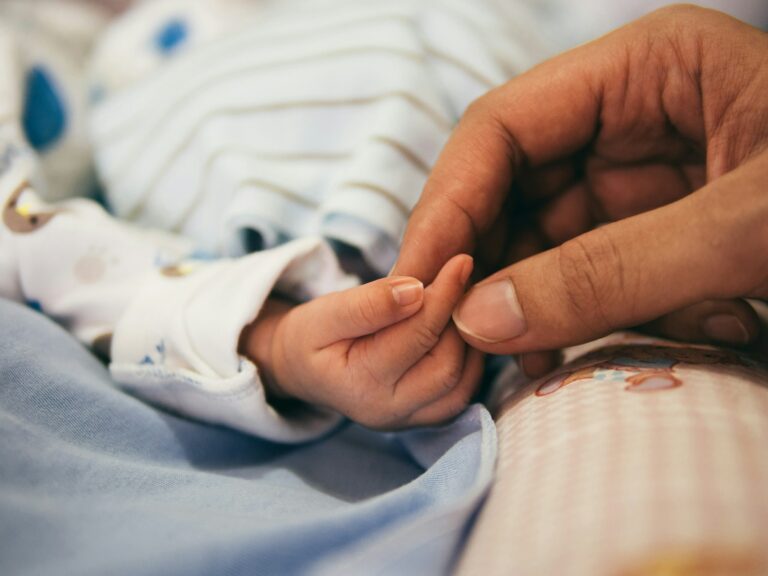The moment parents notice a change in their infant’s behavior—the sudden fever, relentless crying, or listlessness that replaces those usual coos and giggles—a wave of uncertainty often follows. A sick baby, unpredictable and vulnerable, has the remarkable ability to turn the daily rhythm upside down. Should you worry about a cough that lingers, or was that dry diaper just a random occurrence? Parental intuition, sharp and attuned, immediately starts asking all the right questions. Is this a fleeting virus, or does it signal something urgent beneath the surface? When exhaustion mingles with anxiety, clarity can feel miles away. Here, each observation counts, every reaction matters, and finding a sense of reassurance can become a quest—one punctuated by moments of doubt and bursts of determination. With each symptom, from a flushed cheek to troubled breathing, the stakes can feel impossibly high. Let’s unravel, layer by layer, the puzzle of a sick baby—recognizing symptoms, choosing comfort measures, understanding the underlying causes, and knowing precisely when to seek expert care.
Recognizing red flags: how to tell when your baby is truly unwell
Fever: the body’s early warning signal
Fever, the ancient messenger of the immune system, never fails to jolt parental nerves. Technically, anything above 100.4°F (38°C) is considered a fever in infants—especially those under 3 months, whose immune defenses remain immature. If your sick baby’s temperature climbs beyond 104°F (40°C) or lingers stubbornly past a full day, worry is warranted. But fever rarely acts alone: it may be joined by inconsolable crying, limpness, or an abrupt loss of appetite. A short, sharp rise in body heat can sometimes signal the beginning of a mild viral infection—or, more rarely, a dangerous bacterial process. Parents often wonder, should they reach for acetaminophen or just the thermometer? The key is to watch for patterns: is your little one rousable, interactive, making eye contact? Or is there a new, unsettling quietness?
Unusual sleepiness, irritability, and behavior shifts
Ever felt your baby’s sleepy weight melt against you—then, one day, that familiar warmth is replaced by a confusing lethargy? A sick baby who won’t wake for feeds, barely moves, or seems almost detached, is raising a flag you shouldn’t ignore. On the flip side, relentless crying, fussiness that borders on rage, or total disinterest in toys can point toward underlying discomfort. Often, early infections begin not with dramatic symptoms, but with subtle behavior shifts—a shadow beneath the eyes, a stilled hand. These moments, though deceptively ordinary, often offer the earliest clue that something isn’t right.
Dehydration: watching for silent threats
Dehydration hides in plain sight. Fewer than four wet diapers in 24 hours, sunken eyes, skin that appears less elastic, and absent tears when crying—each can indicate that fluid balance is slipping fast. Factor in vomiting, diarrhea, or rapid breathing, and the risk multiplies. Parents sometimes underestimate just how quickly a sick baby can move from slightly dry lips to a concerning clinical picture. Quick intervention—offering breast milk, formula, or an oral rehydration solution when advised—becomes essential, especially as dehydration can exacerbate every other symptom and complicate recovery.
Breathing issues: when every breath counts
Nothing stirs panic like a baby struggling for air. A sick baby using the belly to breathe (watch the stomach, not just the chest), flaring nostrils, a blue shade along the lips, or rapid breathing exceeding expected rates for their age—these demand immediate attention. Rapid, shallow breaths or pauses (apneas) can accompany severe infections like bronchiolitis or pneumonia. No parent should hesitate to seek emergency help when confronted by these signs; delays can turn treatable respiratory distress into a life-threatening emergency.
Vomiting and diarrhea: distinguishing the worrisome from the benign
While the odd spit-up or loose stool is an inescapable part of infancy, frequent, projectile vomiting—especially if tinged green, yellow, or flecked with blood—signals trouble. Combine this with persistent diarrhea, and the dual threat of dehydration and underlying infection surfaces. Some parents are reassured by the notion that stomach bugs come and go; others worry about rarer, but more dangerous, causes like intussusception or metabolic disorders. Watching for frequency, appearance, and associated symptoms gives healthcare professionals essential clues.
Why babies get sick: unveiling the frequent and the rare
Common infections: the usual suspects
The world, for a baby, is teeming with viruses and bacteria. The common cold, subtle but relentless, may bring a stuffy nose, mild cough, and low-grade fever. Bronchiolitis, a prevalent lower respiratory tract infection often caused by RSV (respiratory syncytial virus), can progress rapidly in young infants, leading to breathing difficulties. Viral gastroenteritis, sometimes called “stomach flu,” leads to a cycle of vomiting and diarrhea that often spreads in daycare or playgroup settings. Ear infections (otitis media) and urinary tract infections may masquerade as unexplained irritability or fever.
Rashes and skin changes: decoding the visible clues
A sick baby’s skin often becomes a canvas for underlying processes. Mottling (lacy discoloration), hives, or pinpoint red or purple spots (petechiae or purpura) may appear, prompting investigation. Many rashes are harmless and self-limited, such as erythema toxicum in newborns. Yet, a non-blanching rash (one that does not disappear when pressed) mandates prompt evaluation for severe infections like meningococcemia.
Non-infectious contributors: teething, colic, and environment
Not everything attributed to a sick baby is infectious. Teething tends to provoke low-level discomfort and drooling—rarely actual fever or severe irritability. Colic, with its relentless evening crying, remains a medical mystery and source of parental exasperation. Cigarette smoke, indoor pollutants, and even abrupt environmental changes can increase vulnerability. For babies born early, or who have underlying cardiac or pulmonary diagnoses, the threshold for concern is significantly lower.
Supporting your sick baby at home: comfort, hydration, and safe practices
- Prioritize hydration. Even small, frequent feeds provide both comfort and vital fluid.
- Safe symptom relief: Use saline nasal drops, a gentle suction bulb, and a cool-mist humidifier (or shut yourself in a steamy bathroom for a few cozy, soothing minutes). Avoid over-the-counter cough or cold medications (especially those containing aspirin or honey for children under one year).
- Comfort measures: Gentle rocking, skin-to-skin contact, and a dim, peaceful environment do wonders for both you and your baby.
- Monitor closely: Track symptoms—when did the fever begin? How many times has your baby vomited? Are diapers becoming less frequent?
- When in doubt: Trust your instincts. Sudden deterioration, new symptoms, or a gut feeling that something is “off” all warrant a call to your healthcare provider.
Prevention first: keeping your baby healthy
The simplest habits often offer the most robust protection. Handwashing—twenty seconds, soap, and water—remains your most effective shield. Regular disinfection of bottles, pacifiers, toys, and commonly touched surfaces reduces viral spread. If you are breastfeeding, provide it as long as possible; breast milk offers a unique blend of immune protection impossible to replicate. Avoiding cigarette smoke and limiting visits to crowded, poorly ventilated environments further tips the odds in your favor. Selecting daycares with strict hygiene protocols can also be a game-changer.
When to seek medical help: speed matters
Decisions come fast when you’re caring for a sick baby. Call a doctor immediately if your infant:
- Has a fever under 8 weeks old
- Struggles to breathe, turns blue or gray, or has significant lethargy
- Shows signs of dehydration (no urine in 8 hours, dry mouth, absent tears)
- Develops a new, non-fading rash
- Has a seizure, or becomes unresponsive
For ongoing, milder symptoms—like persisting but moderate diarrhea, repeated vomiting without dehydration, or a new rash—monitor and consult as symptoms progress. Bring detailed notes to your appointment: track every symptom, feed, medication dose, and diaper. Photos or videos of concerning episodes can be invaluable for clinicians.
Special precautions for premature and medically complex babies
For infants born prematurely or with underlying heart, lung, or immune system challenges, vigilance is non-negotiable. Limit exposures, elevate hand hygiene, and be quick to recognize subtle signs—a drop in feeding, faster breathing, floppiness. Regular pediatric follow-up is your anchor, and all caregivers should be thoroughly educated about the specific vulnerabilities facing your child.
Parenting through uncertainty: caring for yourself to care for your baby
Parenting a sick baby can leave you physically depleted and emotionally raw. Listen to the voice that tells you something’s wrong; it is rarely mistaken. Accepting offers of help—whether for twenty minutes of rest or an extra hand with nighttime feeds—is not a weakness but a lifeline. Learn basic infant first aid and keep emergency numbers handy. If worry feels overwhelming or questions pile up, reach out. Support groups and reliable medical advice are there for you. Every moment you spend advocating, soothing, or seeking help is a testament to your dedication—trust that.
Key Takeaways
- Respond quickly to new or persistent symptoms in your sick baby—timing often matters.
- Prioritize hydration and comfort; these are the foundation of every recovery.
- Early recognition of warning signs (lethargy, respiratory distress, dehydration, non-blanching rashes, seizures) can prevent severe outcomes.
- Most illnesses are mild and self-resolving, but stay alert for the rare, serious conditions that need urgent care.
- The combination of evidence-based knowledge, medical partnerships, and parental intuition creates the safest space for a vulnerable child.
- Reliable resources and compassionate professionals stand ready to guide you. For tailored advice and free health checklists for your child, download the Heloa app—empowering parents, one question at a time.
Questions Parents Ask
Can teething make my baby sick?
It’s quite common for parents to notice changes during teething. While teething may make your baby a little more irritable, cause mild discomfort or lead to extra drooling, severe symptoms like high fever or persistent diarrhea usually signal another cause. If your baby presents these signs, don’t hesitate to consult a healthcare professional. Teething can sometimes coincide with other illnesses, making it important to distinguish between the two.
How can I tell if my baby’s sickness is contagious?
Many childhood illnesses, especially those with symptoms like cough, runny nose, or diarrhea, can be contagious—meaning they may pass from your baby to others. Trust your instincts: if your baby has a fever or visible symptoms, it’s best to minimize contact with vulnerable individuals, like newborns or elderly people. Regular handwashing and careful hygiene help limit the risk. If in doubt, your pediatrician can guide you on the most appropriate measures.
What should I do if my baby refuses to eat when sick?
A sick baby may lose interest in feeding, which is understandably concerning for parents. Offer smaller amounts more frequently and let your baby feed when and how they can. Sometimes, patience and gentle encouragement are enough. Prioritize keeping your baby hydrated—fluids are often more important than food in the first days of illness. If your baby continues to refuse liquids or shows signs of dehydration, seek medical advice without delay. Rassurez-vous, many babies regain their appetite as they start to feel better.

Further reading:









